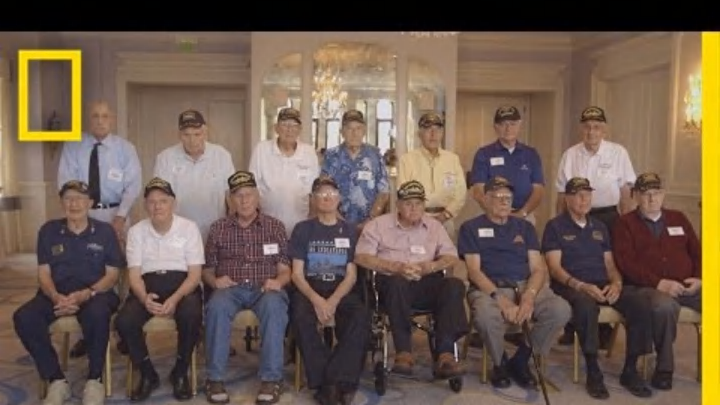Though shark attacks are incredibly rare, they remain a subject of genuine terror. After all, people don’t like to think about being anywhere but at the very top of the food chain.
The worst shark attack in history took place in the summer of 1945—and it was not carefree beachgoers who were the victims. The sharks ravaged those left stranded in the ocean after the bombing and rapid sinking of the USS Indianapolis on July 30, 1945. In 2015, to mark the tragic event’s 70th anniversary, National Geographic spoke to more than a dozen survivors of the doomed warship, which they recorded in the above video.

The tale the survivors tell is horrific. (It’s one that many people first heard in a famous, and partially accurate, monologue by Captain Quint in Jaws.) After delivering enriched uranium and components for Little Boy—the atomic bomb that destroyed Hiroshima about a week later—to a naval base on the Northern Mariana island of Tinian, the Indianapolis was en route from Guam to the Philippines when it was hit by two Japanese torpedoes. The warship sank in just 12 minutes, taking about 300 of the ship’s 1196 crewmen down with it.
The rest found themselves in life jackets bobbing in the ocean. At first, the survivors stayed calm; after all, the ship was expected in the Philippines. “They know we’re coming. No problem,” survivor Vic Bucket remembered thinking. “We just have to sit it out a little bit.”
But soon, exposure, dehydration, salt-water poisoning, and hallucinations began to take their toll. “I’d seen a lot of guys just crack—drink the water, or give up, or they’d swim off to imaginary islands,” recalled survivor Dick Thelan.

The sharks arrived by sunrise of the first day. Over the next several days, the crew’s movement and blood drew ever-increasing numbers of what were probably oceanic whitetip sharks, which dismembered or killed one man after another.
Finally, four days after the Indianapolis went down, a pilot spotted the survivors. And though rescue operations began within hours, in the end, only 317 men survived. Estimates vary widely, but as many as 150 people may have been killed by sharks.
Read More About Sharks:
A version of this story originally ran in 2015; it has been updated for 2025.
